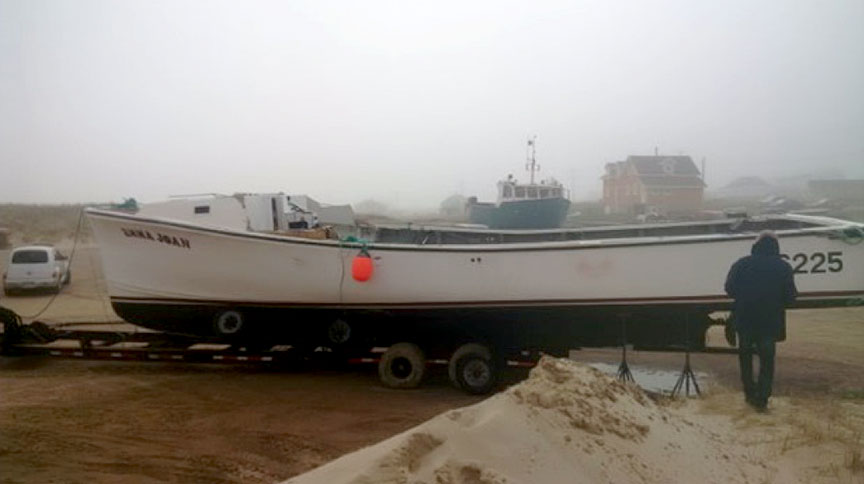Capsizing
Small fishing vessel Emma Joan
Grosse-Île, Îles-de-la-Madeleine, Quebec
The occurrence
On 20 May 2017, the fibreglass lobster vessel Emma Joan, with two people on board, capsized east of the Grosse-Île wharf breakwater in Îles-de-la-Madeleine, Quebec. The two fishermen swam out from under the boat and were rescued by two other fishing vessels that had witnessed the capsizing from the Grosse-Île wharf.
The Emma Joan crew returned to the wharf where they were transported to the hospital by medical personnel. They were released later that day. The Emma Joan drifted ashore and was salvaged the next day. Minor injuries were reported.
Media materials
News release
Investigation report: Capsizing near Îles-de-la-Madeleine, Quebec, May 2017
Read the news release
Class of investigation
This is a class 4 investigation. These investigations are limited in scope, and while the final reports may contain limited analysis, they do not contain findings or recommendations. Class 4 investigations are generally completed within 220 days. For more information, see the Policy on Occurrence Classification.
TSB investigation process
There are 3 phases to a TSB investigation
- Field phase: a team of investigators examines the occurrence site and wreckage, interviews witnesses and collects pertinent information.
- Examination and analysis phase: the TSB reviews pertinent records, tests components of the wreckage in the lab, determines the sequence of events and identifies safety deficiencies. When safety deficiencies are suspected or confirmed, the TSB advises the appropriate authority without waiting until publication of the final report.
- Report phase: a confidential draft report is approved by the Board and sent to persons and corporations who are directly concerned by the report. They then have the opportunity to dispute or correct information they believe to be incorrect. The Board considers all representations before approving the final report, which is subsequently released to the public.
For more information, see our Investigation process page.
The TSB is an independent agency that investigates air, marine, pipeline, and rail transportation occurrences. Its sole aim is the advancement of transportation safety. It is not the function of the Board to assign fault or determine civil or criminal liability.
